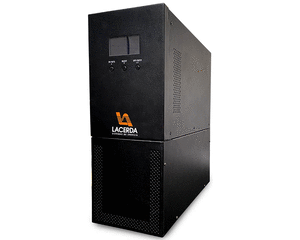quinta-feira, 23 de junho de 2016
ELEMENTOS DE LA GEOMETRIA ANALITICA -Элементы аналитической геометрии-DOCTOR EN CIENCIAS FISICAS Y MATEMÁTICAS PROF.ALEXANDER Vladimirovich Ivanov
quarta-feira, 22 de junho de 2016
MIT OpenCourseWare - Effective Field Theory, Spring 2013 -Instructor: Iain Stewart
Course Description Effective field theory is a fundamental framework to describe physical systems with quantum field theory. Part I of this course covers common tools used in effective theories. Part II is an in depth study of the Soft-Collinear Effective Theory (SCET), an effective theory for hard interactions in collider physics.
LINK
http://ocw.mit.edu/courses/physics/8-851-effective-field-theory-spring-2013/
terça-feira, 21 de junho de 2016
Luminescence in science and society -46th International Seminar Kyoto University Human and Environmental Studies -Prof.Pieter Dorenbos
46th International Seminar Kyoto University Human and Environmental Studies Luminescence in science and society Prof.Pieter Dorenbos Visiting professor at Kyoto University (Oct-Dec. 2013) Fundamental Aspects of materials and Energy Luminescence materials Research Delft University of Technology, the Netherlands
VIDEOS
| SES # | Title | Time | VIDEO |
| 1 | Introduction | 00:00:00-00:02:11 | Video |
| 2 | Part1 | 00:02:11-00:13:23 | Video |
| 3 | Part2 | 00:13:23-00:29:08 | Video |
| 4 | Part3 | 00:29:08-00:51:22 | Video |
| 5 | Q & A | 00:50:22-01:09:16 | Video |
LINK ORIGINAL
Science for Light-Supreme technology and ideas for an illuminating future (Global Focus on Knowledge) Lecture 13 Future of optical technology Makoto Gonokami - The University of Tokyo Center for Research and Development of Higher Education
光の科学−未来を照らす究極の技術とアイデア(学術俯瞰講義) 五神 真 他 教養学部・総合文化研究科 2012 冬学期 Science for Light-Supreme technology and ideas for an illuminating future (Global Focus on Knowledge) Makoto Gonokami and others Arts and Sciences, 2012 Winter
Light is the source of life. The culture and civilization of human beings have been developing in a close linkage with light. People have been watching nature through light since the dawn of their history, and have been observing objects in various levels of scale, from stars to microscopic things. They have also clarified a great deal of nature’s mechanism through such observation. The very basic question about what light is led us to the discoveries of modern physical foundations – quantum theory and the theory of relativity. Since the invention of the laser in the late 20th century, optical technology has not just been leading advanced sciences but also supporting social infrastructures as one of the fundamental technologies. As the “eyes” of scientific observations, optical technology has advanced so greatly that it can now capture a phenomenon lasting only for one-quadrillionth of a second or help us monitor human brain activity without doing anything intrusive. Light is widely used as the ultimate “hands” to manipulate materials. It is also applied to the creation of an extremely high-temperature and high-pressure state equivalent to the inside of a star through focusing of its energy on a very tiny space. Light makes it possible to control the behavior of substances with astonishing accuracy by cooling them to ultra-low temperatures. Modern information networks rely on light as the footman for carrying data. Very strange characteristics of faint light have shown signs of the possibility to develop ultimately secure information technology. These latest optical technological developments can easily be found in our daily lives as well. New optical technology such as lighting provides us with novel visual experiences and creates special spaces to enrich our mental activities. In that sense, it is art. Light is used in many fields as the so-called “all-rounder.” This course is aimed at introducing the latest situation of light science from various viewpoints.
LINK VIDEO IN JAPANESE
http://ocw.u-tokyo.ac.jp/movie?id=1122&r=
Geometry of Riemann Surfaces, Elliptic Function Hirosi Ooguri -International Lectures on Frontier Physics 1 Hirosi Ooguri -The University of Tokyo Center for Research and Development of Higher Education
We will learn modern mathematical methods in physics. We will focus on uses of geometric concepts. For a tentative plan of the course, check out https://sites.google.com/site/caltechtodai/home/plan-of-the-course
Lecture 9
Riemann surfaces, elliptic functions
LINK VIDEO IN ENGLISH
http://ocw.u-tokyo.ac.jp/movie?id=858&r=
LECTURE NOTES ENGLISH -http://ocw.u-tokyo.ac.jp/lecture_files/sci_03/9/notes/en/ooguri09.pdf
LINK VIDEO FULL OPENCOURSEWARE UNIVERSITY OF TOKYO
http://ocw.u-tokyo.ac.jp/lecture?id=11330
International Lectures on Frontier Physics 1 Lecture 1 Exterior Product, Fermions Hirosi Ooguri - OPENCOURSEWARE The University of Tokyo Center for Research and Development of Higher Education
Lecture 1
In this course, we will learn methods of geometry in modern physics. Historically, mathe-
matics and physics influenced each other in their developmen
ts. We know, for example, that
Newton invented calculus and classical mechanics simultan
eously. However, in the mid 20th
century, there was a period when interactions between physicists, in particular high energy
physicists, and mathematicians almost stopped. There were
two main reasons. One was on the
mathematics side. The Bourbaki movement.
Another was on the physics side. Quantum field theory was conc
eived by Heisenberg
and Pauli in 1929 and Feynman, Schwinger, and Tomonaga estab
lished the renormalization
procedure to make sense of QED. However, there was not mathem
atical formulation of quantum
field theory. In fact, there is still no rigorous mathematica
l foundation for it, except for special
cases, some of which we will see later in this course. Making sense of quantum Yang-Mills theory
is posed as one of the seven Millennium problems by the Clay Mathematics Institute.
The situtation has dramatically changed since the 1980’s. I
t is because of the use of
supersymmetry. Supersymmetry brought mathematics and phy
sics closer since it is close to
the language mathematicians use to describe geometric concepts.
LINK VIDEO IN ENGLISH
http://ocw.u-tokyo.ac.jp/movie?id=849&r=&s=1&t=967&f=0
LINK VIDEO IN ENGLISH
http://ocw.u-tokyo.ac.jp/movie?id=849&r=&s=1&t=967&f=0
segunda-feira, 20 de junho de 2016
CALCULUS II- PART 4-Dra. Yoon Song - Soongsil University Department of Mathematics Seoul, SOUTH KOREA- OpenCourseWare-VIDEO ENGLISH- 미적분학2 4차시
CALCULUS II- PART 4-Dra. Yoon Song - Soongsil University Department of Mathematics Seoul, SOUTH KOREA- OpenCourseWare-VIDEO ENGLISH- 미적분학2 4차시
Assinar:
Postagens (Atom)






















































